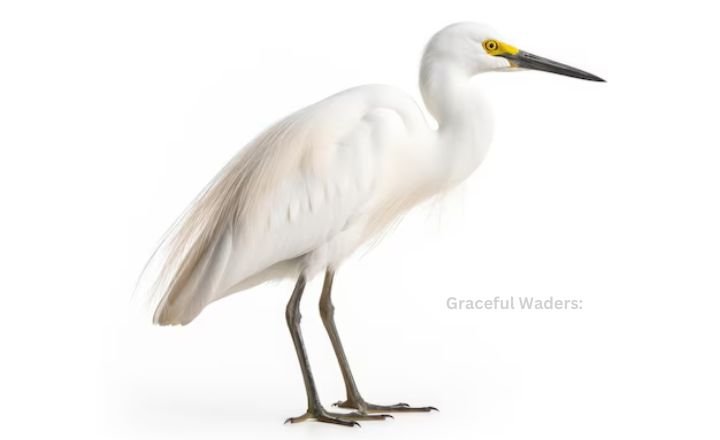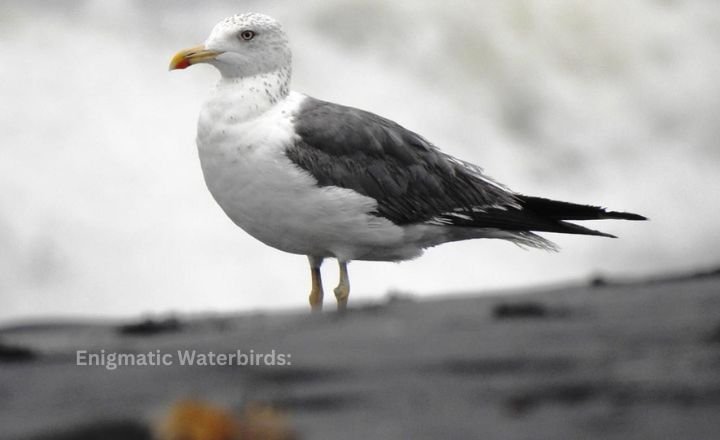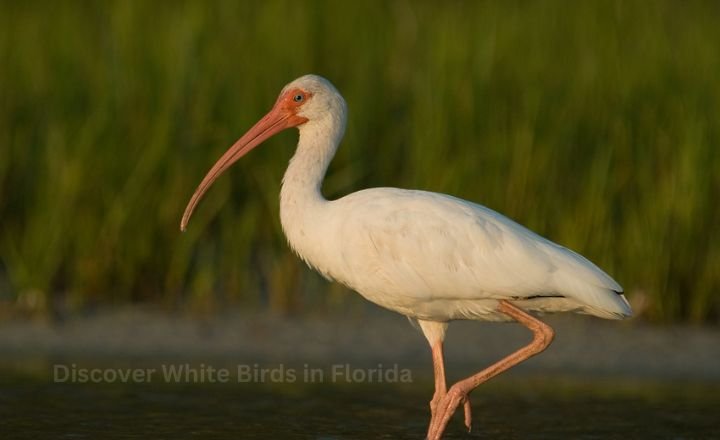7 Types Of White Birds in Hawaii
Welcome to the serene beauty of white birds in Hawaii. While many may draw comparisons between these ethereal creatures and Florida black birds known for their striking plumage and social behavior. Among these feathered gems are the enchanting white birds that flit gracefully across its skies, each species showcasing unique characteristics that add to the islands’ charm.
Types of White Birds Found in Hawaii
Hawaii’s avian landscape is as diverse as its breathtaking scenery, featuring a variety of white birds that add elegance to the islands. These charming birds can often be seen wading in shallow waters, using their sharp beaks to hunt for fish and crustaceans. Observing them in their natural habitat provides a glimpse into the intricate balance of Hawaii’s ecosystems, reminding us of the importance of preserving such unique species.
Elegant Seabirds:
The skies of coastal landscapes are adorned with elegant seabirds, each species bringing its unique grace and charm to the natural canvas. In Florida, the striking silhouettes of black birds dance along the shoreline, effortlessly gliding across the breeze. An array of dazzling white birds contrasts against the vibrant blue waters of the Pacific.

- Elegant seabirds, with their graceful wings and streamlined bodies.
- Their striking plumage often reflects the colours of the sea and sky
- They play a crucial role in marine ecosystems, maintaining balance as both predators and prey.
- They swoop and dive with precision in search of fish or other marine delicacies.
- Elegant seabirds remind us of the delicate interplay between grace and survival in the wild.
Charming Songbirds:
The enchanting world of charming songbirds features delightful species such as the White-eyes, White-rumped Shama, and White-throated Sparrow.
- The White-eyes, known for their distinctive rings around their eyes
- The White-rumped Shama captivates listeners with its rich, complex songs that echo through dense undergrowth, showcasing a remarkable vocal prowess.
- Meanwhile, the White-throated Sparrow enchants birdwatchers with its striking plumage and sweetly whistled phrases that signal the arrival of spring.
Together, these songbirds weave a vibrant tapestry of sound and beauty in their natural habitats.
Graceful Waders:
In the serene wetlands of Hawaii, graceful waders such as

- The Hawaiian Black-necked Stilt and the White-faced Ibis elegantly traverse the shallow waters in search of food.
- Their striking plumage contrasts beautifully against the lush backdrop, with the stilt’s long legs.
- Meanwhile, the majestic Great White Egret stands sentinel, its pristine feathers glistening in the sunlight as it patiently awaits its next catch.
Exquisite Shorebirds:
The exquisite shorebirds that grace our coastlines are a testament to nature’s artistry, with each species showcasing unique characteristics and behaviours.
- The Pacific Golden Plover is a true marvel of migration, travelling vast distances between its breeding grounds and wintering habitats.
- The Sanderling scurries along the shoreline, tirelessly foraging for small invertebrates buried in the sand.
- Meanwhile, the Ruddy Turnstone deftly flips over pebbles and shells in search of food.
Enigmatic Waterbirds:
The Hawaiian coot, Hawaiian gallinule, and snowy plover are three enigmatic waterbirds that grace the diverse ecosystems of Hawaii.

- The Hawaiian coot, with its striking white bill and distinctive black plumage, is often seen gliding across tranquil waters or foraging among reeds.
- The Hawaiian gallinule captivates with its vibrant colours and long, slender legs, showcasing a remarkable adaptation to the lush wetlands it inhabits.
- The snowy plover adds a touch of elegance to sandy shorelines with its delicate frame and subtle plumage that helps it blend seamlessly into its coastal environment.
Together, these species highlight the rich avian diversity of Hawaii while also underscoring the importance of conservation efforts to protect their unique habitats.
Fabulous Falcons:
The world of raptors is truly captivating, with the Fabulous Falcons leading the charge in showcasing nature’s aerial prowess.
The majestic Gyrfalcon stands out as the largest of all falcon species, renowned for its striking plumage and impressive hunting skills in Arctic landscapes.
The enigmatic Barn Owl, often mistaken for a mere nocturnal creature, possesses an unparalleled ability to hunt silently, its heart-shaped face aiding in extraordinary hearing capabilities.
The iconic Peregrine Falcon reigns supreme as the fastest bird on the planet, capable of reaching speeds over 240 miles per hour during its breathtaking dives.

White Tern
The White Tern Found predominantly in the tropical regions of Hawaii, these striking white birds exhibit fascinating nesting habits that set them apart. Unlike many bird species that rely on complex nests or hidden locations, White Terns prefer to lay their eggs directly upon bare branches or in coastal vegetation. This minimalist approach not only allows them to easily spot potential threats but also ensures their young have immediate access to open air and abundant sunlight.

The white tern is just one of the many fascinating bird species found in Hawaii. Discover more about the diverse avian life that graces the Hawaiian islands, including the Laysan Albatross and the Red-Tailed Tropicbird.
- The Laysan Albatross is renowned for its incredible wingspan and enduring monogamous relationships, making it a symbol of loyalty among seabirds.
- The red-tailed tropicbird flaunts a fiery tail to complement its bright plumage.
- There’s the Hawaiian black-necked stilt; this shorebird captures attention with its long legs and striking coloration as it wanders coastal wetlands.
White-tailed Tropicbird
The striking white-tailed tropicbird, often referred to as the “glorious ghost of the sea,” captivates onlookers with its elegance against the azure backdrop of Hawaii’s skies. This bird, notable for its long, flowing tail feathers and vivid black markings around its eyes and beak, is not just a delightful spectacle but also a symbol of marine health.

They engage in elaborate aerial displays that involve swooping dives and graceful upward spirals, an enchanting dance performed over pristine waters that effortlessly captures the imagination. Nesting predominantly on remote rocky cliffs or beautiful offshore islands, they strategically avoid predators while displaying natural artistry each breeding season.
Arctic Tern
Migratory Pattern
The Arctic Tern’s migratory pattern is a breathtaking demonstration of nature’s endurance and adaptability. Covering a staggering round-trip journey of up to 44,000 miles annually, these remarkable birds migrate from their breeding grounds in the icy expanses of the Arctic to the sun-drenched waters around Antarctica. Along this incredible journey, they exhibit an exceptional knack for navigation, using both celestial cues and geographic landmarks. This elegant white bird traverses diverse ecosystems, offering a living testament to interconnected habitats its route weaving through coastal regions like Florida teeming with vibrant blackbirds in harmony with their feathered cousins.
Red-tailed Tropicbird
The Red-tailed Tropicbird is a remarkable inhabitant of the Pacific skies. With their stark white feathers that almost seem to glow against the azure backdrop of Hawaii’s coastline, these birds are often spotted gliding gracefully over rocky shores and coral reefs. Their long tail feathers stream behind them like ribbons in the wind, adding an enchanting dynamic to their flight as they search for fish just beneath the ocean’s surface.

Physical Characteristics
The Red-tailed Tropicbird, found predominantly along the tropical coasts and islands of the Pacific, including Hawaii, showcases a striking visual appeal that captivates both bird watchers and casual observers alike.
- With its elongated tail feathers stretching up to 40 inches long.
- Its vibrant plumage features bright white body feathers punctuated by bold black markings on its wings.
- a distinctive crimson stripe on its tail qualities that set it apart from other avian species.
- Their aerodynamic body shape and powerful wings allow for efficient gliding over vast ocean waters, making them expert foragers as they dive into the sea in pursuit of fish.
Laysan Albatross White Birds in Hawaii
Physical Characteristics: The Laysan Albatross, boasts impressive wingspans reaching up to 6.5 feet. Their striking white plumage contrasts beautifully with dark grey wingtips, creating a captivating sight against the backdrop of azure skies and tropical waters. Their unique long bills enable them to forage efficiently; they can easily snatch fish from the water’s surface while in flight.

Habitat: predominantly on islands such as Midway Atoll in the Northwestern Hawaiian Islands, this species thrives in remote oceanic environments where they establish large breeding colonies.
Diet: Feeding primarily on squid, fish, and crustaceans, sometimes even scavenging from fishing vessels.Their diet showcases an interplay between adaptation and survival, shedding light on how Hawaii’s pristine marine ecosystems sustain these majestic aviators.
Feeding Habits:The Laysan Albatross exhibits remarkable foraging techniques that involve dynamic gliding patterns over waves to spot prey below.
Hawaiian Black-necked Stilt
Physical Characteristics: With long, spindly legs and a slender body adorned with glossy black feathers on its back, this shorebird also boasts a stunning contrast of white underparts and a distinctive neck that is often highlighted by vibrant pink hues. Its elongated bill is perfectly designed for probing into mudflats or shallow waters, allowing these birds to deftly extract tiny invertebrates hidden beneath the surface.
Habitat:These elegant creatures thrive in coastal wetlands and marshes throughout Hawaii, favouring brackish environments where they can find abundant food sources.
Diet: Their diet primarily consists of small crustaceans, insects, and even seeds an adaptive strategy that reveals their opportunistic feeding behavior.
Common Myna
Physical Characteristics and Body Features
The Common Myna is easily recognizable by its striking plumage, characterized by a rich brown body paired with glossy yellow patches on the wings and tail. Its bright orange eye patch and bold yellow legs offer an attractive contrast, contributing to its vibrant appearance. Unlike many birds, Mynas possess a uniquely curved beak that aids in foraging, helping them pick worms and insects out of the ground. These features allow them to adapt well to urban environments as they often forage for food in parks or gardens.
Native Birds of Hawaii
Hawaii’s native birds showcase a remarkable diversity of body features adapted to their unique environments. The bright plumage of the Hawaiian honeycreepers, for example, is not just a feast for the eyes but plays a crucial role in attracting mates. Some species boast elongated bills designed for extracting nectar from indigenous flowers. A specialization that aligns with Hawaii’s vibrant ecosystem.
Protecting White Birds in Hawaii
Hawaii, an archipelago rich in biodiversity, is home to several unique species of white birds. These avian gems include the native Hawaiian i’iwi and the striking Laysan albatross, which are not only important ecological indicators but also deeply woven into Hawaii’s cultural tapestry. Their existence faces severe threats from habitat loss due to urban development, invasive species, and climate change.
Organizations Working for Bird protection
Organisations like the Hawaiian Audubon Society and the Maui Nui Bird Conservation can be credited with pioneering efforts to protect these exquisite avian treasures. They not only conduct field research but also seamlessly integrate community engagement programs that inspire local residents to participate in bird conservation initiatives. Through workshops, outreach campaigns, and citizen science projects, these organisations foster a collective sense of responsibility for protecting Hawaii’s unique avifauna.
FAQs
What are the white birds in Hawaii called?
You may have wondered about the manu-o-Kū, the graceful white seabirds that are often seen around Honolulu. Honolulu’s official bird is culturally significant to Native Hawaiians, intrepid ocean voyagers who relied on the manu-o-Kū for navigating their way back to land while at sea for centuries.
How many types of birds are in Hawaii?
The scope of this list encompasses the entire Hawaiian Islands chain, from Kure Atoll in the Northwestern Hawaiian Islands to the north, to the “Big Island” of Hawaii to the south. The list contains 337 species. Of them, 64 are or were endemic to the islands, 130 are vagrants and 52 were introduced by humans.
What is the white seabird in Hawaii?
All-white plumage and black eyes. Near-shore bird seen around Honolulu. Also known as the “fairy tern.” Famous for laying its egg on a rock, a rock ledge, or a bare branch rather than in a nest.
What is the largest bird in Hawaii?
The largest flying bird in Hawai’i is the Laysan Albatross with a wingspan around 80 inches and weighing around 8 to 9 pounds. The largest flightless bird in Hawai’i is the Nene – Hawaiian goose. They are an endangered and protected species. They weigh between 4 and 7 pounds and stand approximately 16 inches tall.






